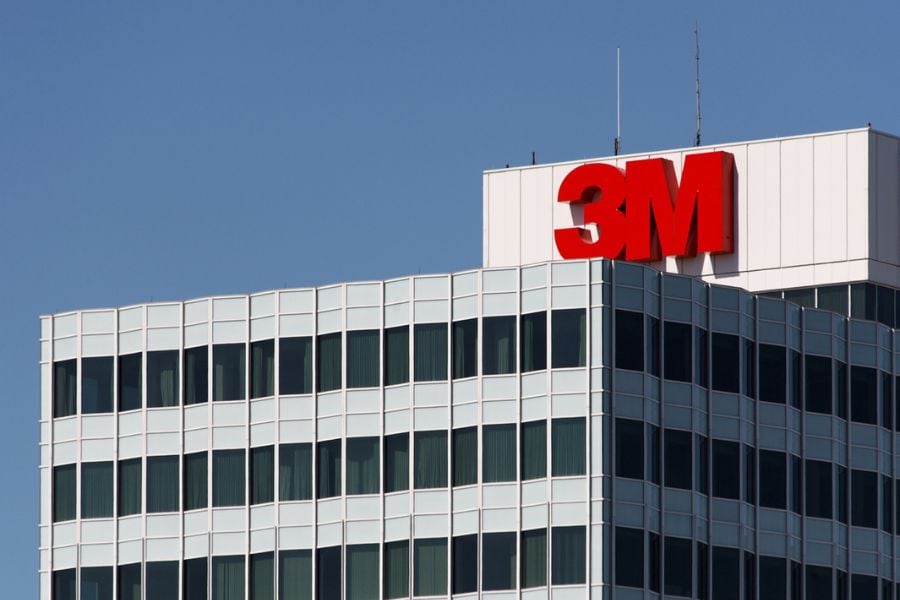

3M is freezing its pension plan, the company announced Monday, a decision that contrasts with IBM’s recent move to add a cash-balance program for its workers.
The U.S. pension freeze at 3M won’t occur until 2028 and applies only to nonunion workers, the company stated, noting that it has been favoring a shift toward its 401(k) plan for some time. The measure comes as pension plans' funded ratios have reached levels not seen in years, giving the employers that sponsor them an affordable exit through pension risk transfers, in which the assets are moved to insurance companies.
"This is an important decision for 3M as it helps to set up both companies for future success. This was also a difficult decision because it impacts employees across the U.S.,” 3M CEO Mike Roman said in the announcement. “To help those impacted, we are providing five years of advance notice to ensure our employees can plan alternative strategies to meet their post-retirement income needs.”
A 3M spokesperson referred a request for comment back to the company's announcement but noted that the 401(k) plan includes a company match. The firm’s annual report for 2023 has not been released, but 2022 data from a Form 10-K filing with the Securities and Exchange Commission show a funded ratio for the pension of 93.65%, with fair value assets for the plan at $12.6 billion and net obligations of $13.5 billion.
The company closed off its pension plan to new hires beginning in 2009. That the forthcoming freeze does not affect union employees hints at the demand among unions for access to traditional pensions. Last year, bargaining between the United Auto Workers and the three big U.S. car makers – Ford, General Motors and Stellantis – focused in part on a proposed reintroduction of pensions. However, the UAW ended its strikes on terms that did not include pensions.
IBM surprised the retirement saving world late last year when it announced that it would move the match contribution of its 401(k) plan to a pension-style account with a fixed rate of return over three years – what appears to be a cash-balance plan. A move to a pension of any kind runs counter to the trend among U.S. companies of shedding or closing defined-benefit pensions in favor of defined-contributions plans like 401(k)s.
Read more: Comparing the 401(k) vs. pension plan
While that has been the trend for decades, employers with old pensions have shown a lot more interest over the past year in getting liabilities off their books.
That comes amid a “one-in-20-year event,” said Gary Veerman, head of the pension solutions group at Capital Group, in which a prolonged equity bull market coincided with rapidly rising interest rates, putting many pensions' funded ratios above 100% for the first time since the financial crisis.
At the end of 2023, corporate pension funded ratios reached an average of 100%, up from an average of 98% a year earlier, according to data published last week by Willis Towers Watson, based on an analysis of 358 Fortune 1000 companies that sponsor defined-benefit plans.
Plan sponsors are thinking more than ever about lump-sum buyouts for pension participants, pension risk transfers or allocating more assets to liability-driven investments to help their plans stay at over 100% funding, Veerman said.
“There are still a ton of people in the education phase, trying to think through what pension risk management means to them,” he said.
That process means squaring on-balance sheet and off-balance sheet liabilities, the latter of which can include forms of pension risk transfer to address pension risks, Veerman noted. For some, there is likely a fear of going back down below the 100% funded ratio, he said.
But it also doesn’t make much sense to aim for funded levels higher than about 110%, since a surplus of assets can't easily be tapped for anything other than benefits payments, Veerman said. “We call that a ‘trapped surplus.’”
And even though rates have dipped over the past couple months, “we are still in a very good environment,” he said. “Equity markets are still at all-time highs.”
Pension-risk transfers increased by 39% during the third quarter, with the highest number of contracts on record for a single quarter, according to data last month from Limra. The high number, which was accompanied by a drop in sales compared with the third quarter of 2022, shows that smaller and midsize employers are more interested in pension risk transfers than in the past, the group stated.

Relationships are key to our business but advisors are often slow to engage in specific activities designed to foster them.

Whichever path you go down, act now while you're still in control.

Pro-bitcoin professionals, however, say the cryptocurrency has ushered in change.

“LPL has evolved significantly over the last decade and still wants to scale up,” says one industry executive.

Survey findings from the Nationwide Retirement Institute offers pearls of planning wisdom from 60- to 65-year-olds, as well as insights into concerns.
Streamline your outreach with Aidentified's AI-driven solutions
This season’s market volatility: Positioning for rate relief, income growth and the AI rebound
